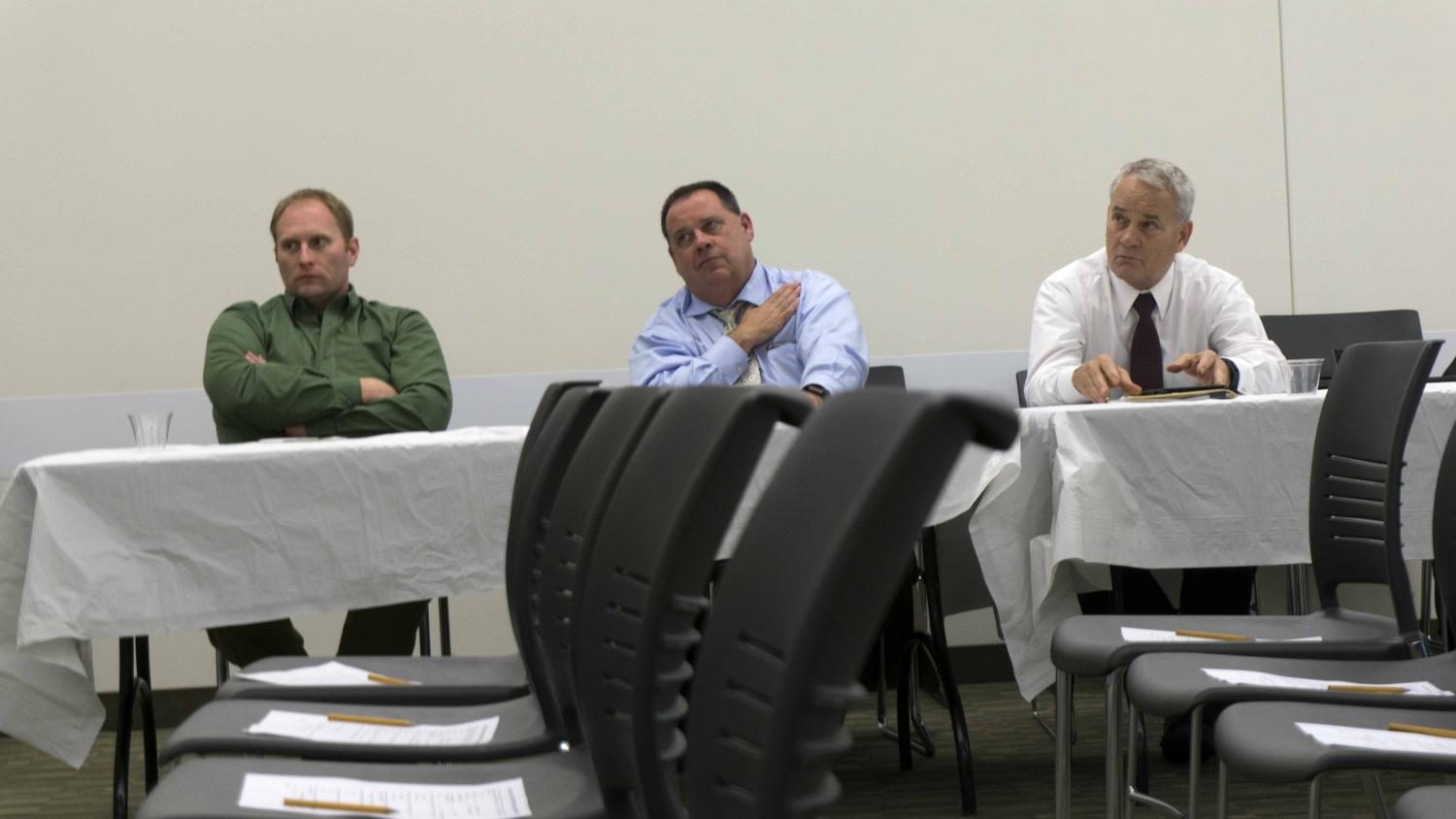Daniel Injerd talks about Northeastern Illinois’ water problems at COD
Injerd (first from right), listening to a member of the panel
April 26, 2017
Water supply planning in the State of Illinois is at the brink of dormancy with the current budget logjam in Springfield. If water usage data cannot be collected, the Office of Water Resources, the state’s water supply regulatory body, cannot make any plans for water supply throughout the state.
This means the state as a whole cannot make any plan for water supply based on changing climate, weather and population.
In his capacity as the director of the OWR, Daniel Injerd didn’t mince his words when he expressed how bothered he is by this situation when the college hosted a Water Resource Challenges Facing Northeastern Illinois symposium on April 20.
“It is not exciting; it is something that has to occur year after year,” said Injerd. “Everybody wants to do studies that will lead to a product and a recommendation.
“But in water supply planning, you have to have historical water use data. Fortunately, in Illinois we’ve had the State Water Survey. They have been conducting a water inventory program for many years. But as you know, we don’t have a budget in Illinois for almost two years. So, public water supply and data collection and industrial reporting are currently suffering and are in danger of not being continued. This bothers me.”
Outlining the technical problems facing Northeastern Illinois, Injerd mentioned the depletion of deep sandstone aquifers, as one of the reasons for a potential water shortage within this region.
This depletion means water isn’t replenishing when pumped out from these drilled deep wells to the elevated towers that have the name of our village. This condition is a scare for cities that partially get their water supply from Lake Michigan, Rivers Kankakee, and Fox and also tap out wells.
Water in these wells is to be replaced by water that falls through rain and snow.
But there exists a problem in the state’s Northeastern region that is far beyond the OWR jurisdiction. Currently, there has been population growth occurring in places with potential water shortages.
“Nobody in government talks about land use when we talk about water supply,” added Injerd. “As the state regulatory agency over water quantity, I have absolutely no authority to utilize any measure of my authority to influence where growth occurs.
“Those are local issues, but it is an interesting challenge.”
On the other hand, Injerd expressed his optimism about the state’s capability to address a future water demand that may arise.
“While you read all the stories about our budget deficit, one area that Illinois has a water surplus in the bank is for water, which is a cushion against changes in hydrology,” added Injerd. “We have the capability today to meet whatever public water supply need there will be.”
The Village of Glen Ellyn was represented on the panel by its superintendent for utilities John Hubsky and chief engineer Rich Daubert.
Hubsky alluded to Injerd’s assertion about the depletion of water in the deep sandstone aquifers. Fortunately, the Village of Glen Ellyn’s wells are for backup purposes, while its population is supplied water from the DuPage Water Commission. The commission gets its water from the Jardine Plant, the world’s largest water filtration plant.
The College of DuPage offers Astronomy, general Earth Science, Geology, Hydrology, Meteorology and Oceanography through the Earth Sciences program. For a complete detail about this program, visit:
http://www.cod.edu/programs/earth_science/index.aspx


















